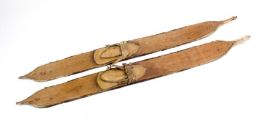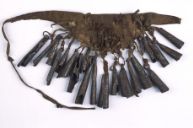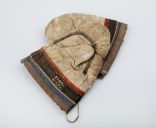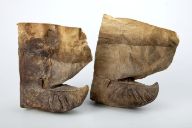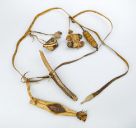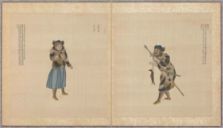Nivkh curk for Volkenkunde
This is the story of a Nivkh robe made of fish skin. It is just one of over five hundred items that German-Russian merchant Adolf Vasil’evič Dattan donated to various European museums. He donated this robe to the Volkenkunde Museum in Leiden in 1898. His collections were acquired when he crisscrossed the Amur region to conduct trade with representatives of indigenous peoples. For unknown reasons, he gave the items away to various museums across Europe.
The Amur is a river that flows along the present-day border between Russia and China and ends in the Strait of Tartary, where it becomes part of the Pacific Ocean. A number of different peoples live along this river. In this tour we will encounter some of them: the Ulch, the Nanai, the Heje and most importantly, the Nivkh. The first three of these speak Tungusic languages, a language family to which the language of the Manchus also belongs (which we will also encounter later in this tour). The Nivkh, however, speak a language completely unrelated to any other language in the world.
This robe is a cultural product of the Nivkh, one of the peoples inhabiting the area along the Amur river and the island of Sakhalin. We do not know when the tradition of making this type of robes started, but what we do know is that Nivkh anthropologist and linguist Čuner Mixajlovič Taksami reported in 1970 that women, mainly elderly women, still wore this kind of traditional clothing. The range of materials used had become more limitedand fish skin was apparently not used anymore. Let us start to explore this robe. Or, let us call it a curk, because that is how the Nivkh call it themselves.
